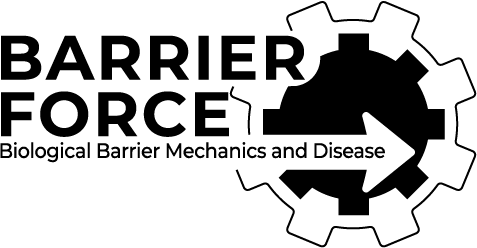Filopodia are actin-rich membrane protrusions essential for cell morphogenesis, motility, and cancer invasion. How cells control filopodium initiation on the plasma membrane remains elusive. We performed experiments in cellulo, in vitro, and in silico to unravel the mechanism of filopodium initiation driven by the membrane curvature sensor IRSp53 (insulin receptor…
Author: Henok Karvonen
Single particle tracking reveals SARS-CoV-2 regulating and utilizing dynamic filopodia for viral invasion
Although severe acute respiratory syndrome coronavirus 2 (SARS-CoV-2) entry mechanism has been explored, little is known about how SARS-CoV-2 regulates the subcellular structural remodeling to invade multiple organs and cell types. Here, we unveil how SARS-CoV-2 boosts and utilizes filopodia to enter the target cells by real-time imaging. Using SARS-CoV-2…
How Neuromembrane Lipids Modulate Membrane Proteins: Insights from G-Protein-Coupled Receptors (GPCRs) and Receptor Tyrosine Kinases (RTKs)
Lipids play a diverse and critical role in cellular processes in all tissues. The unique lipid composition of nerve membranes is particularly interesting because it contains, among other things, polyunsaturated lipids, such as docosahexaenoic acid, which the body only gets through the diet. The crucial role of lipids in neurological…
Ablation of integrin-mediated cell-collagen communication alleviates fibrosis
CONCLUSIONS: The data provide evidence for a crucial role of collagen-binding integrins in fibroblast force generation and differentiation in vitro and for matrix deposition and tissue remodelling in vivo. Targeting fibroblast-collagen interactions might represent a promising therapeutic approach to regulate connective tissue deposition in fibrotic diseases.
IGFBP2 secretion by mammary adipocytes limits breast cancer invasion
The progression of noninvasive ductal carcinoma in situ to invasive ductal carcinoma for patients with breast cancer results in a significantly poorer prognosis and is the precursor to metastatic disease. In this work, we have identified insulin-like growth factor-binding protein 2 (IGFBP2) as a potent adipocrine factor secreted by healthy…
Psychedelics promote plasticity by directly binding to BDNF receptor TrkB
Psychedelics produce fast and persistent antidepressant effects and induce neuroplasticity resembling the effects of clinically approved antidepressants. We recently reported that pharmacologically diverse antidepressants, including fluoxetine and ketamine, act by binding to TrkB, the receptor for BDNF. Here we show that lysergic acid diethylamide (LSD) and psilocin directly bind to…
Psychedelics promote plasticity by directlybinding to BDNF receptor TrkB
Psychedelics produce fast and persistent antidepressant effects and induce neuroplasticity resembling the effects of clinically approved antidepressants. We recently reported that pharmacologically diverse antidepressants, including fluoxetine and ketamine, act by binding to TrkB, the receptor for BDNF. Here we show that lysergic acid diethylamide (LSD) and psilocin directly bind to…
Actin-rich lamellipodia-like protrusions contribute to the integrity of epithelial cell–cell junctions
Metastasis-suppressor 1 (MTSS1) is a membrane-interacting scaffolding protein that regulates the integrity of epithelial cell–cell junctions and functions as a tumor suppressor in a wide range of carcinomas. MTSS1 binds phosphoinositide-rich membranes through its I-BAR domain and is capable of sensing and generating negative membrane curvature in vitro. However, the mechanisms…
Sonochemical Formation of FluorouracilNanoparticles:Toward Controlled Drug Deliveryfrom Polymeric Surfaces
Background: The use of nanotechnology in the production of medical equipment has opened new possibilities to fight bacterial biofilm developing on their surfaces, which can cause infectious complications. In this study, we decided to use gentamicin nanoparticles. An ultrasonic technique was used for their synthesis and immediate deposition onto the…
